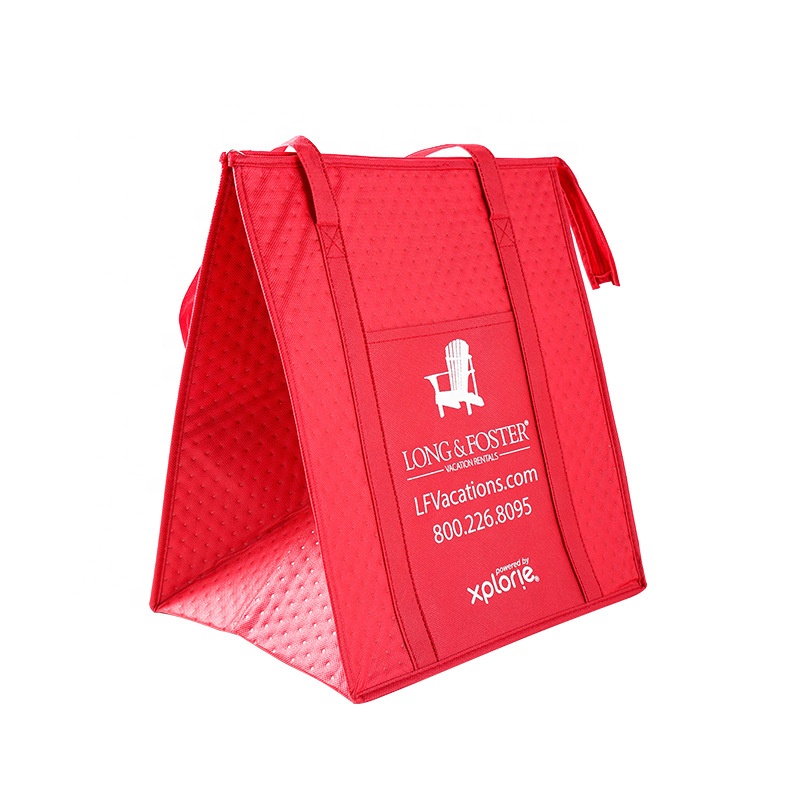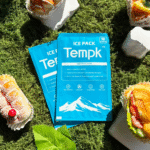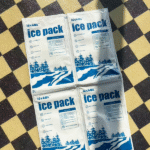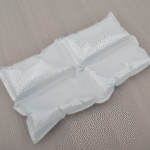Différence entre la glace sèche et le gel: Ce qui convient à vos besoins?
Choisir entre packs de glace sèche et de gel est un dilemme commun en ce qui concerne l'expédition des marchandises sensibles à la température. Les deux options sont conçues pour garder les produits cool, Mais ils travaillent différemment et sont adaptés à des besoins spécifiques. Dans ce guide, Nous allons explorer les principales différences entre les packs de glace sec et de gel, Vous aider à déterminer quelle option convient le mieux à vos besoins en chaîne froide.
-
Comment les packs de glace et de gel sèchent selon les méthodes de refroidissement
-
Meilleures applications pour les packs de glace sèche et de gel
-
Coût et considérations environnementales pour chaque option
-
Quand en choisir l'un plutôt que l'autre en fonction des besoins de votre envoi
-
Conseils pratiques pour utiliser en toute sécurité les packs de glace sec et de gel
Comment les packs de glace sec et de gel diffèrent-ils en refroidissement?
La glace sèche est un dioxyde de carbone solide (Co₂) qui sublime à –78,5 ° C, le rendre idéal pour expédition ultra-froide, Garder les produits figés pendant de longues périodes. En revanche, Les packs de gel utilisent un matériau à changement de phase (PCM) Pour garder le contenu au frais, généralement entre 0 et 8 ° C, et sont conçus pour marchandises réfrigérées plutôt que des articles surgelés.
Tandis que la glace sèche propose durée de refroidissement plus longue à des températures beaucoup plus basses, Les packs de gel sont plus facile à gérer, plus respectueux de l'environnement, et généralement plus rentable pour les durées plus courtes.
Packs de glace sec contre gel: Différences clés
| Méthode de refroidissement | Plage de température | Utilisation idéale | Durée de refroidissement |
|---|---|---|---|
| Glace sèche | –78,5 ° C | Aliments surgelés, médicaments, biologique | 24–72 heures |
| Packs de gel | 0–8 ° C | Marchandises réfrigérées, fournitures médicales | 12–48 heures |
Conseils pratiques
-
Pour les produits surgelés: La glace sèche est votre meilleure option pour maintenir les températures inférieures à zéro sur des périodes prolongées.
-
Pour les produits réfrigérés: Les packs de gel sont parfaits pour garder les produits dans la plage de 2 à 8 ° C pendant 1 à 2 jours.
-
Pour les expéditions mixtes: Utilisez les deux - de la glace dery pour les produits surgelés et les packs de gel pour les articles réfrigérés.
Exemple réel: Une entreprise de logistique a réussi à expédier des vaccins à l'aide de packs de gel pour les articles réfrigérés et de la glace sèche pour les biologiques qui nécessitaient des températures de congélation, S'assurer que les deux sont restés dans des gammes de températures optimales.
Quand devriez-vous utiliser de la glace sèche sur des packs de gel?
La glace sèche est la solution à la recherche lorsque vous devez garder les articles figés à des températures subzero-zéro. Cela le rend idéal pour Longues expéditions d'aliments surgelés, médicaments, et des échantillons biologiques qui doit rester en dessous de –20 ° C ou plus froid.
La glace sèche fournit un Effet de refroidissement puissant et est généralement utilisé pour les expéditions qui durent plus que 24 heures. Cependant, La glace sèche nécessite une ventilation et une manipulation appropriées pour éviter l'accumulation de dioxyde de carbone, le rendre moins pratique pour les expéditions plus petites ou les durées courtes.
Meilleures utilisations pour la glace sèche
-
Aliments surgelés: Utilisez de la glace sèche pour garder la glace, viandes surgelées, ou des fruits de mer solides pendant des jours.
-
Pharmaceutiques et biologiques: Certains médicaments, comme les vaccins, Besoin de rester à basse température, quelle glace sèche peut facilement fournir.
-
Transport à long terme: La glace sèche est parfaite pour les expéditions qui doivent rester congelées pendant de longues périodes.
Quand choisir la glace sèche pour votre expédition
| Type d'expédition | Efficacité de la glace sèche | Gel emballe l'efficacité | Meilleure utilisation |
|---|---|---|---|
| Aliments surgelés | Très efficace | Inefficace | Glace sèche pour des voyages prolongés |
| Médicaments | Très efficace | Inefficace | Glace sèche pour les envois surgelés |
| Biologique | Très efficace | Inefficace | Glace sèche pour le contrôle de la température |
Quand devriez-vous utiliser des packs de gel sur de la glace sèche?
Les packs de gel sont idéaux pour les produits réfrigérés qui doit rester à températures entre 0 et 8 ° C. Cela les rend parfaits pour Expédition plus courtes de nourriture, médicaments, ou produits de soins personnels qui ne nécessitent pas de températures glaciales.
Les packs de gel sont également plus facile à gérer et non toxique, Les rendre adaptés à un plus large éventail de marchandises. Ce sont souvent les option plus rentable pour le contrôle de la température à court terme par rapport à la glace sèche.
Meilleures utilisations pour les packs de gel
-
Fournitures médicales: Gardez les médicaments tels que l'insuline ou les antibiotiques au frais pour les durées courtes.
-
Nourriture périssable: Utilisez des packs de gel pour les fruits, laitier, et les légumes qui ont besoin de réfrigération mais pas de congélation.
-
Biens de consommation: Idéal pour les cosmétiques ou les produits de soins personnels qui ont besoin d'un cool, température stable.
Quand choisir des packs de gel pour votre expédition
| Type d'expédition | Gel emballe l'efficacité | Efficacité de la glace sèche | Meilleure utilisation |
|---|---|---|---|
| Aliments réfrigérés | Très efficace | Inefficace | Emballages en gel pour des voyages plus courts |
| Médicaments | Très efficace | Inefficace | Emballages en gel pour les médicaments réfrigérés |
| Produits de beauté | Très efficace | Inefficace | Emballages en gel pour les articles sensibles à la température |
Coût et considérations environnementales: Packs de glace sec contre gel
La glace sèche est plus efficace pour l'expédition ultra-froide, Mais il vient avec des coûts plus élevés et les préoccupations environnementales dues aux émissions de CO₂. La glace sèche doit également être Réapprovisié régulièrement, surtout pendant les expéditions longues.
Les packs de gel sont plus respectueux de l'environnement et réutilisable, ce qui en fait un solution rentable Pour les temps de transit plus courts. Ils n'ont pas besoin d'une manipulation spéciale, sont moins susceptibles de causer des problèmes de sécurité, et peut être facilement éliminé sans préjudice environnemental.
Comparaison des coûts: Packs de glace sec contre gel
| Méthode de refroidissement | Coût moyen par expédition | Impact environnemental | Meilleure utilisation |
|---|---|---|---|
| Glace sèche | $25- 50 $ | Haut (CO₂ EMISSIONS) | Marchandises surgelées à long terme |
| Packs de gel | $10- 30 $ | Faible (non toxique, réutilisable) | Marchandises réfrigérées à court terme |
2025 Tendances de la logistique de la chaîne du froid: Innovations et réglementations
À mesure que l'industrie de la chaîne du froid évolue, 2025 Les tendances mettent en évidence la demande croissante de solutions de refroidissement durables et efficaces. Les packs de gel deviennent de plus en plus respectueux de l'environnement avec des options recyclables ou biodégradables, et Nouvelles technologies de glace sèche sont développés pour réduire les taux de sublimation et minimiser l'impact environnemental.
Dernières tendances
-
Emballage durable: Les nouveaux packs de gel biodégradables et les matériaux d'isolation deviennent plus courants.
-
Technologie de refroidissement intelligente: Systèmes de surveillance de la température intégrés aux solutions d'expédition de glace sèche et de gel pour assurer l'intégrité du produit.
-
Logistique économe en énergie: Les entreprises recherchent des moyens de réduire l'empreinte carbone des expéditions de longue distance.
Perspicacité du marché: La demande mondiale de solutions de chaîne froide durables a ressuscité 20% dans 2024, tiré par des réglementations environnementales plus strictes et la demande des consommateurs pour des produits écologiques.
Questions fréquemment posées {#FAQ}
Q: Puis-je utiliser des packs de gel pour les articles qui doivent rester figés?
Non, Les packs de gel sont conçus pour la réfrigération (0–8 ° C). Pour les exigences de congélation, La glace sèche est nécessaire.
Q: Combien de temps durent des packs de gel pendant l'expédition?
Les packs de gel peuvent garder les articles au frais pendant 12 à 48 heures, en fonction de l'isolation et de la température extérieure.
Q: Y a-t-il des préoccupations environnementales sur l'utilisation de la glace sèche?
Oui, La glace sèche libère du gaz co₂ car il sublime, qui contribue aux émissions de gaz à effet de serre. Une manipulation et une élimination appropriées sont nécessaires.
Résumé & Plats à emporter
Les packs de glace sec et de gel sont tous deux essentiels pour les expéditions sensibles à la température, Mais ils sont adaptés à des besoins différents. Utilisez de la glace sèche pour les températures de congélation et les expéditions plus longues. Optez pour des packs de gel lorsque vous devez maintenir des températures plus fraîches pour des durées plus courtes. Considérer le coût, impact environnemental, Et vos exigences d'expédition spécifiques lors de la prise de décision.
Que faire ensuite
-
Calculez les besoins de refroidissement de votre expédition en utilisant notre guide.
-
Commander des packs de gel ou de la glace sèche De tempk pour votre prochaine expédition.
-
Partagez ce guide avec votre équipe logistique pour assurer la meilleure solution de refroidissement.
À propos du tempk
Tempk fournit des solutions de logistique avancée en chaîne du froid, offrant des packs de gel, glace carbonique, et emballage à température personnalisée. Nous nous assurons que vos envois sensibles à la température arrivent à destination dans un état optimal, Que vous expédiiez les produits pharmaceutiques, nourriture, ou biologiques.
Besoin de solutions de chaîne froide sur mesure? Contactez-nous Pour des conseils et des conseils d'experts.






